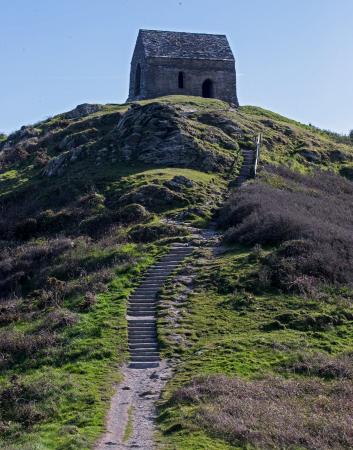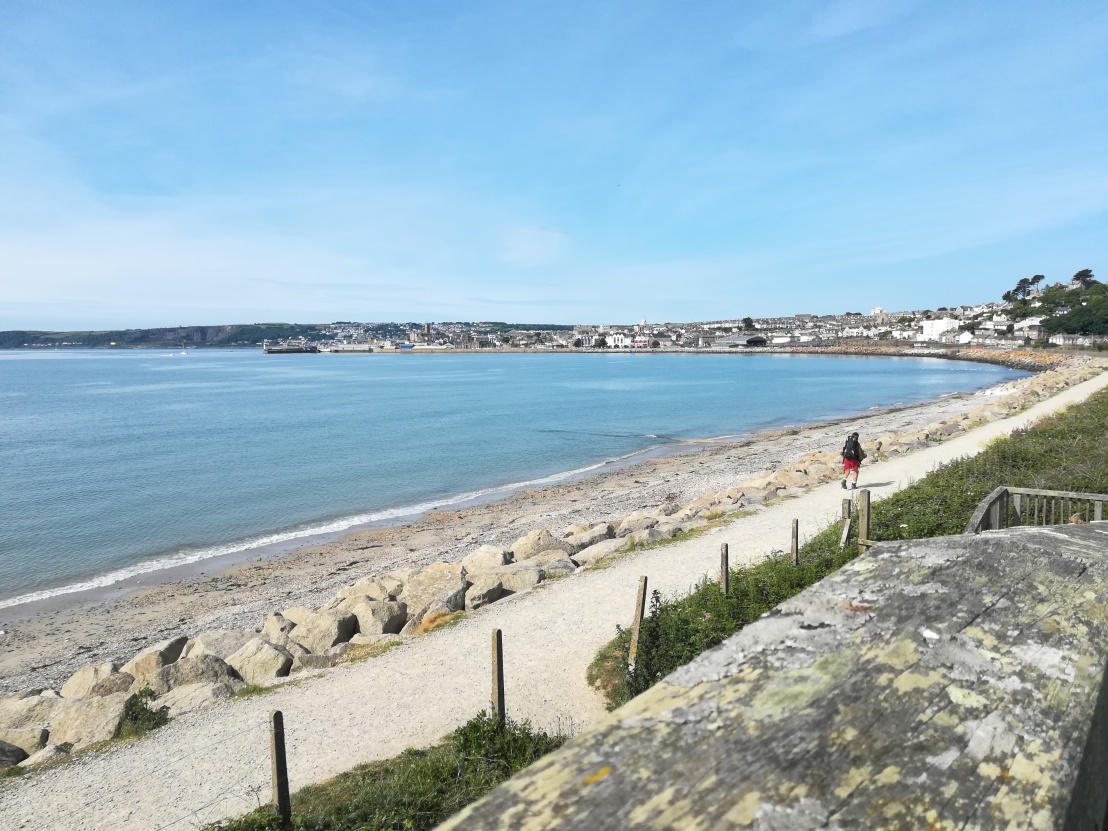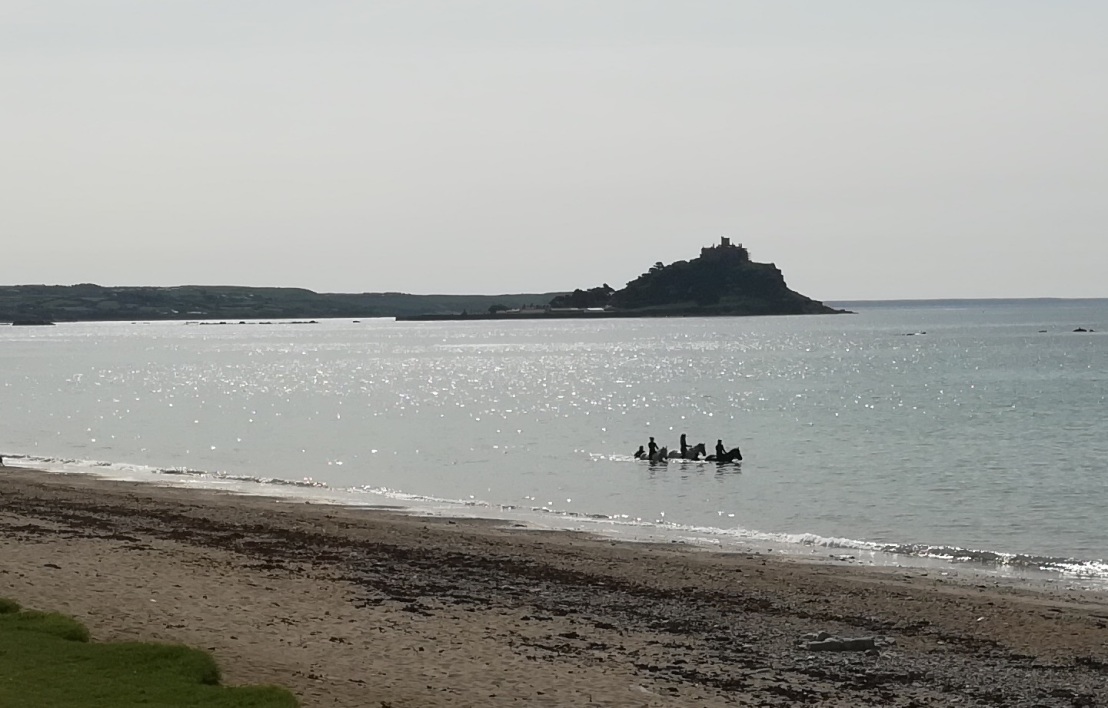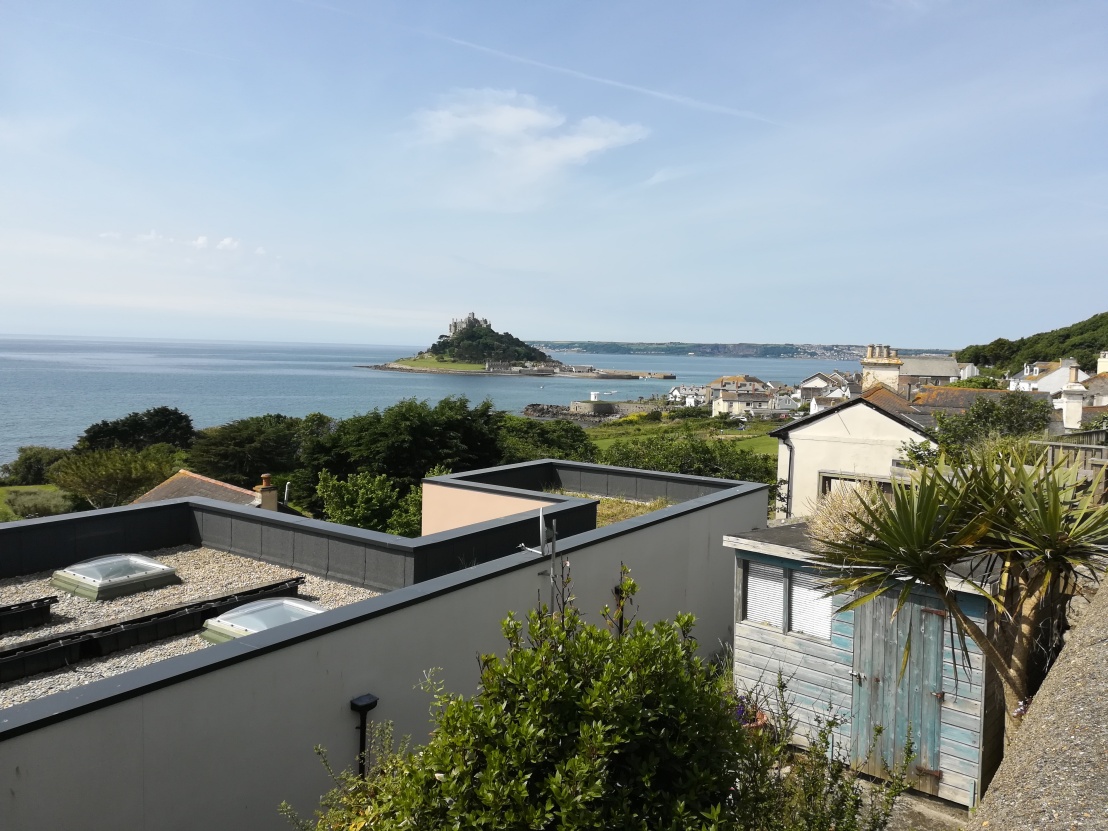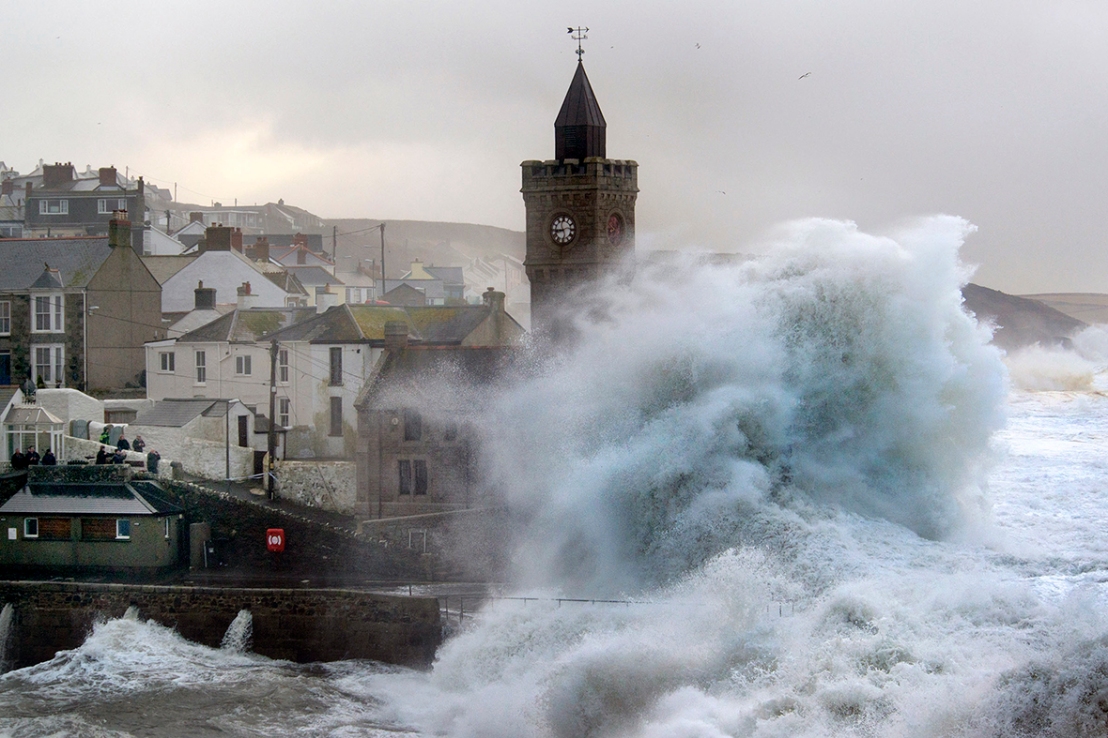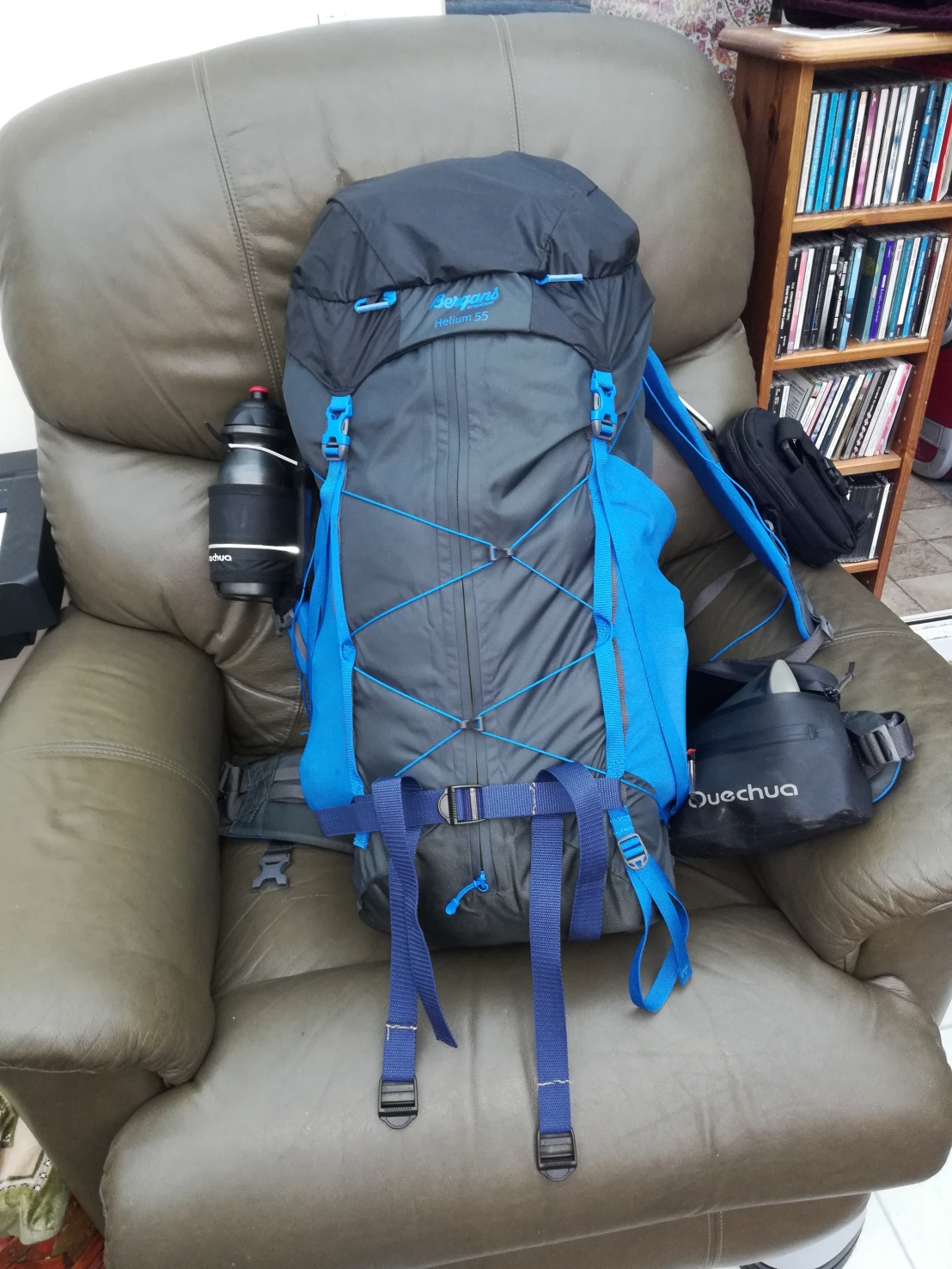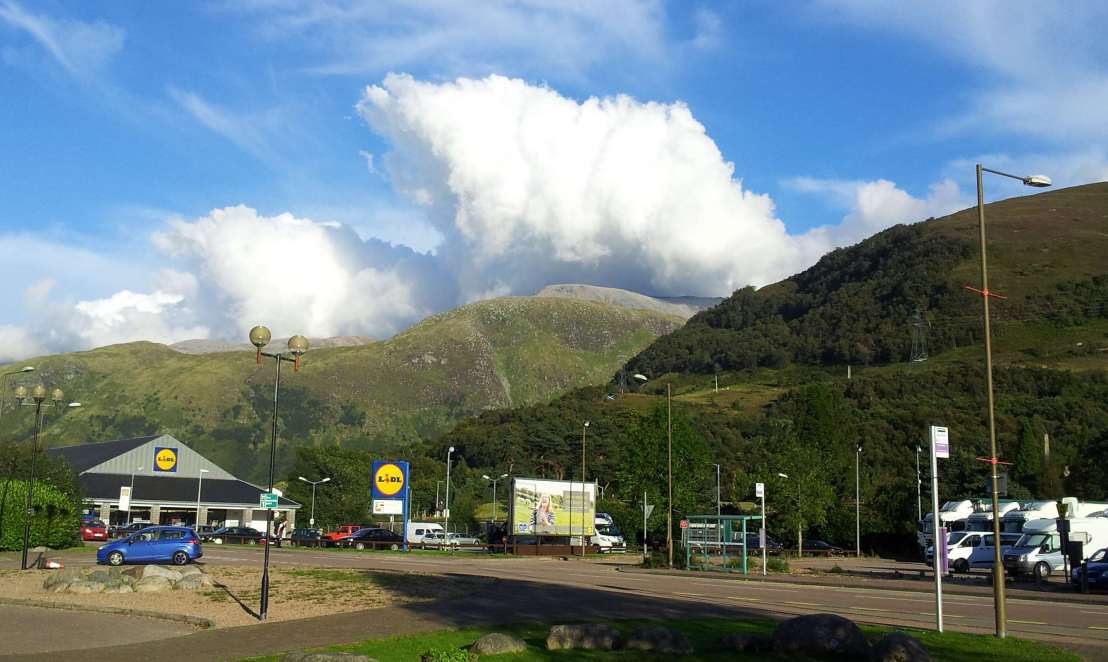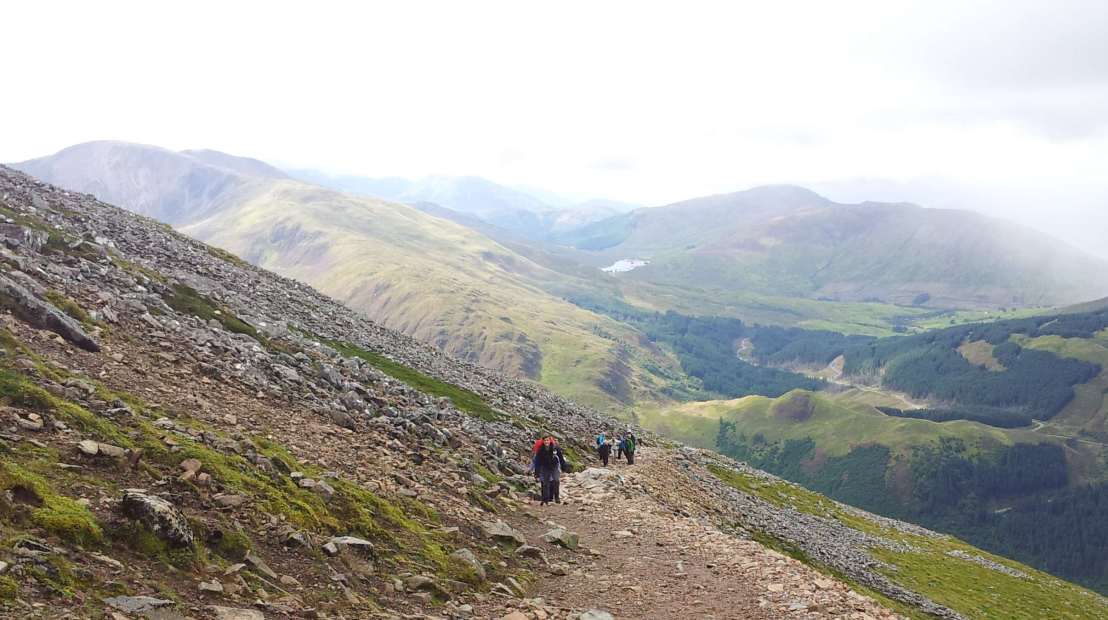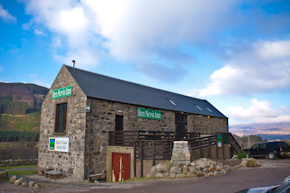Well, I can stand. And a night’s rest has improved my left shin so that, as I test it by moving around, it’s not as painful as it was last night. Will I manage to complete the toughest day of the entire trip, with at least 19 miles to do again but this time with 4,000 feet of ascent, more than double yesterday’s? I honestly don’t know if I will. I smile at the irony – in theory, I’m now meant to be at my fittest, after 17 days of walking up and down steep hills and, in a way, I am. On the other hand I have an annoying little injury which threatens to put the kaibosh on the crowning day. But not if I can help it.
I take the tent down and allow the dew on it to dry in the midsummer’s day sun as I head uphill for a wash. It’s great to be up before anyone else on the site and breakfasting al fresco with sea views in early morning sunshine. I breathe it all in deeply, knowing I’ll be back at work tomorrow, tethered to a computer again after 18 days of being free range on the hoof (to cross-pollinate metaphors). I get away by 7.45 with just a slight limp, down past the clubhouse to the coast path, which immediately shows it means business by climbing up to the woods on High Peak.

In the woods I’m soon made aware, by the swarms of mosquitoes, that I’ve forgotten to apply sun cream/insect repellent. Having had three nibbles from horse flies during this trip (have you noticed how they unerringly find a vein?), I quickly make good my omission. I then, so as not to blur my phone screen, wipe greasy fingers on my last remaining hanky, which I’m determined to hang on to for the remainder of the day.
The good old master plan allows nine hours for today’s walk. By inserting a rest day on Tuesday, I’m now due to finish on a day when Liz will be teaching in the evening, so she’ll only be able to drive out to pick me up if I’m on schedule; otherwise I’ll catch the splendid X53 for a scenic ride on a double decker along one of the best bus routes in the country. As I’ve found over the last couple of days, I’m pretty much fine going uphill, but my left shin slows me down considerably on steep downhills, putting a big question mark over my ability to get to Lyme for 5pm.
Another steep hill negotiated and I’m heading down to Sidmouth, when a detachment of squaddies in full kit and bearing arms come marching in step up the hill in two columns. I ask the first few whether this was a ‘beasting’, which draws a smile from some, then I ask their sergeant what they’ve done to deserve this and he says (loudly): “Nah! They bin good!” I dread to think what they get when they’re bad!
The first thing you come across on approaching Sidmouth from the west is a staircase known as ‘Jacob’s Ladder’.

Now, everyone knows that the real Jacob’s Ladder is in Derbyshire and constitutes the soft way up Kinder Scout, now that the Pennine Way has been re-routed; this is a mere step-ladder in comparison. I look back at this morning’s route, less than 2½ miles, but it’s taken me an hour.

I fail to find an open café along the seafront so ask a fishmonger, who’s just opening up his shop, and am directed to the Dukes Inn. There I indulge in my last full English for a good while, at the cost of over half an hour, but thinking that, if ever I needed to fuel up well, today’s that day.

Without further ado the coast path takes me over a footbridge and up Salcombe Hill Cliff, initially via steep side roads. Then it’s a switchback to the top of Higher Dunscombe Cliff which is, true to its name, higher. In the other direction, Portland beckons tantalisingly.

By 11 o’clock I’m toiling up the sixth major ascent of the day, pausing for breath and mentally calculating that a 5pm finish is looking less and less likely, unless I really motor along any level sections but, if I do that, I’m likely to cause more issues with my leg. I text Liz again, because she keeps asking me to keep her posted on my ETA. By now, water has become a significant issue due to the sun, the heat and all the climbs – I’m likely to run out before I want to unless I can refill.
The next major descent causes a major problem. Many of these hills have thick, two foot wooden planks laid upright across the path as steps, intended to help walkers, but they’re a mixed blessing; sometimes the earth gets eroded behind the steps, so you have to choose between stepping, with your foot sideways, between these obstacles or balancing a foot precariously on the thin edge of the plank. Anyway, the steps are so deep that using them puts a strain on the knees, inducing walkers, where possible, to set foot to the side of them, creating stepped indentations in the earth; this can help you to reduce the depth of each wooden step down by placing one foot on or between the wooden steps and the other on the earthen steps to the side. I’m in the process of doing precisely this on the precipitous drop down to Branscombe Mouth when I see that my right foot is about to step on a twig; I take it for granted that, under the weight of me plus backpack, the twig will snap or be crushed. What it actually does is roll a short distance, causing me to come down heavily on my left foot for balance, jarring my shin. It takes me an age to descend the rest of the way down to The Sea Shanty café, hobbling with very short steps, convinced that my walk is over. I just don’t see how I can carry on to do the last 10 miles – I’ll have to call Liz. Worthy effort and all that, 279 miles, nice try – but a failure, a loss of face nonetheless. What a pain!
I limp into the first door of the café to be told, a trifle smugly, that I can only buy a takeaway coffee that side, even though there’s a connecting doorway between this bar and the larger one serving the other side. Ok, so I make my way painfully round to the main part, order a flat white and a slice of Bakewell tart and take them outside to a sort of inner terrace with a water feature, and off which there are loo doors. I sit dejectedly sipping, refraining from contacting Liz, putting off the inevitable. Removing the boot and rolling down the sock, I see that the leg is a little swollen and blotchy around the ankle and up the shin; does that mean it’s a stress fracture? Such a shame when I’ve done half of today’s walk, and the toughest half at that, at not far off 2½ mph excluding breaks. I finish the cake, re-tie my boot, then drink up the remaining water in my ½ litre container with the idea of refilling it, if not at the water feature, then at the sink in the gents. Being a tad dehydrated, I visit the gents only a refill, but find a notice saying that it’s not drinking water. When I ask in the café, the waitress is happy to fill my bottle, and it’s on returning to my table that I notice the pain has eased somewhat. Whether it was the brief rest, the caffeine, raising the blood/sugar level or the rehydration that helped, or combination of all these, I’ve no idea, but faint hope blossoms. I look up at the daunting East Cliff and, telling myself that limping uphill is easier on the shin than down, figure that I might as well give it a go.

In fact the path doesn’t climb all the way up the cliff but veers off to follow a route lower down, initially between more garden sheds. I suppose it was inevitable that the path would eventually climb to the clifftop, but it does so only after Hooken Cliffs. Could this be the last big climb?

The transition from red cliffs to white, from Triassic to Jurassic, is well under way. My progress is less well under way, but I’m moving. From here the Dorset coast stretches before me, with the length of today’s walk thus far visible behind. I round the corner at Beer Head with Seaton below and only a short stretch to Beer itself. I’ll have to set aside my rule about not drinking both at lunchtime and at night, if only to have a beer here. I ask the scouser landlord at The Anchor Inn what proportion of his sales he thinks are thanks to this whimsy, but he says he hasn’t thought of it that way before. It’s a well-kept pint, though, second only to the one enjoyed in Coverack.

Naturally the climb after Hooken Cliffs wasn’t the last – there’s another one out of Beer, but it soon puts me in Seaton, which makes me feel really quite close to my destination because I’ve previously done the undercliff walk here from Lyme Regis. I celebrate by sitting on a bench to finish off my snacks – the final cereal bar and an apple; I’ve already consumed the peanuts and jelly babies for help with the earlier humongous climbs today.

I see no ducks as I leave Seaton, but what I do see is yet another blessed hill up to and alongside the golf course. I have to concede that I’m tired now, but I’d always planned to bow out on a big day, just as I did with the Byrness to Kirk Yetholm stage over the Cheviots to complete the Pennine Way; it takes the sense of satisfaction to another level. I might even have to resort to a ProPlus and some Kendal Mint Cake to keep me going. In fact, reading the sign posted before the undercliff path, I may need a rescue party: it describes all manner of hazards, tells you there’s no escape on the landward side and that it can take 3½-4 hours to complete the 7 miles to Lyme Regis.

As it’s already 3.30, I hope it doesn’t take that long as that would be cutting it fine for the last bus to Weymouth and leave me no time to eat, but I have texted Liz to say that I’m not going to make it for 5 o’clock.
In the event, it takes me 2½ hours, but it’s some of the hardest walking I’ve ever done. There are lots of little ups and downs, including the notoriously nasty, deep steps, there’s mud, even after a long dry spell, because so little light penetrates, there are rocky stretches but, worst of all, there are masses and masses of tree roots to negotiate. And it just goes on and on and on being difficult. And if you’ve already done a dozen of the hilliest miles on the coast, and if that’s at the end of 18 days of walking, and if, what’s more, you’re carrying a stress fracture, then it becomes extremely tiresome. Yes I do resort to a ProPlus tab, yes I do munch half a dozen squares of Kendal Mint Cake, and I also, finally, run out of isotonic and water. Emerging from the woods into the sunlight around 6pm feels like a cross between coming out of a matinée film into daylight and crawling from the desert down to an oasis – the relief is vast.
The first pint doesn’t last very long. I’ve been seeing a mirage of a huge pizza for the last five miles, so that’s what I order at the rather pleasant Pilot Boat, along with garlic bread and a side salad. And another beer. Checking Viewranger, I see that I’ve covered 21 miles today, not 19, which helps to explain how the last section came to seem interminable. Before I pay up and leave, I check the bus times Liz has texted me and realise I just might catch the earlier X51, leaving Lyme around a quarter to seven; it only goes as far as Dorchester, but then I could catch the number 10 back to Weymouth and still beat the later bus, getting dropped at a bus stop closer to home into the bargain. I set off up the hill, only to see the bus trundle past, but it’s just as well that it did – I’ve left my hat in the pub! Retrieving the hat, I also pick up a paper serviette to act as a temporary hanky, my final cotton one having gone the way of all the others, doubtless enriching Devon’s landscape.
The bus stop for the X53 is outside the Co-op in Lyme. The Co-op is opposite The Volunteer Inn. Need I say more? Sitting at a bus stop opposite a pub, and a traditional one at that, for 45 minutes is more temptation than a weary hiker can take, so I simply have to sample their wares. I’ve rarely had so euphoric and gloriously panoramic a bus journey as this one, sitting in the front seat on the top deck, trying hard not to doze off. As a bonus, the day’s dehydration means that, even after five pints of ale, the bladder only just begins to murmer by the end of the 1½ hour journey. And how wonderful it is, as the bus pulls away from the King’s Statue, to see Liz approaching in the car. All in all, a fine ending to an arduous, uncomfortable day, rounding off a superb 18 day hike I’d heartily recommend to anyone slightly fitter than me!









